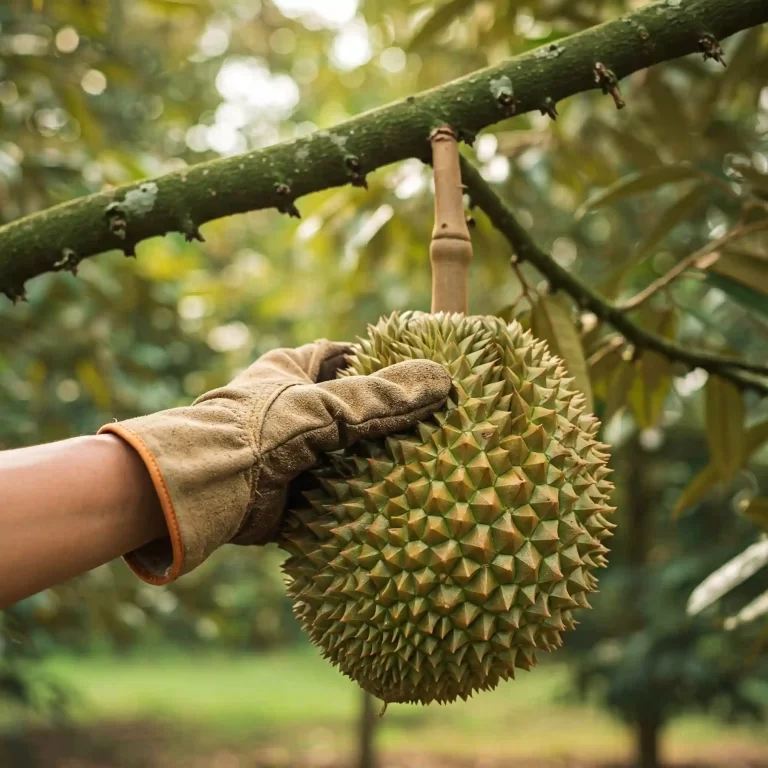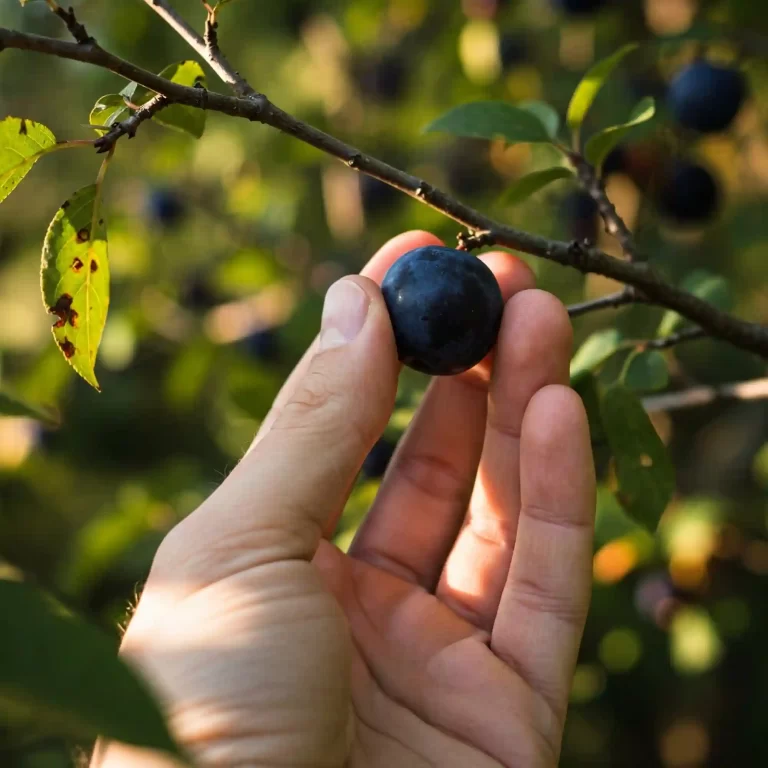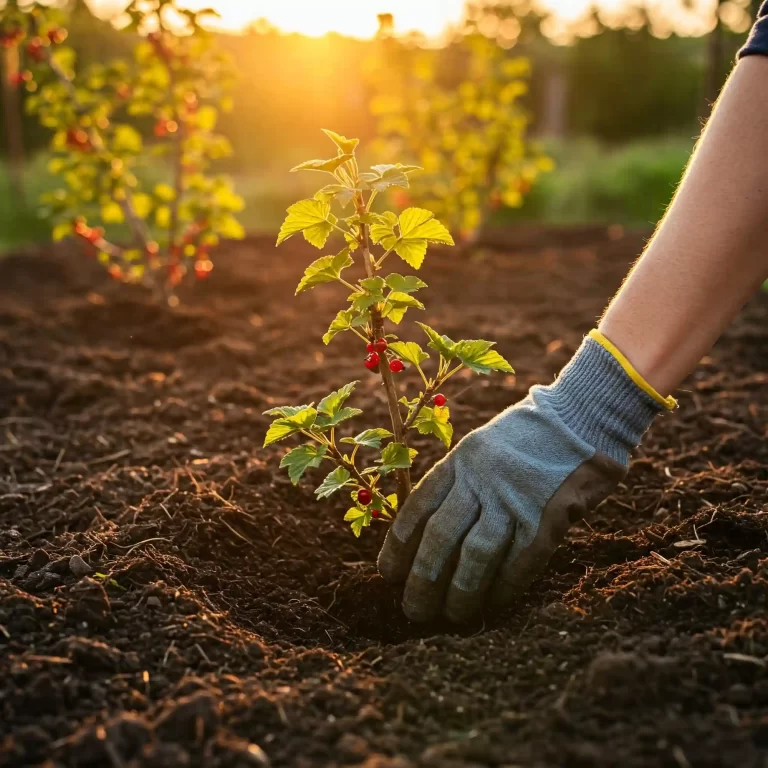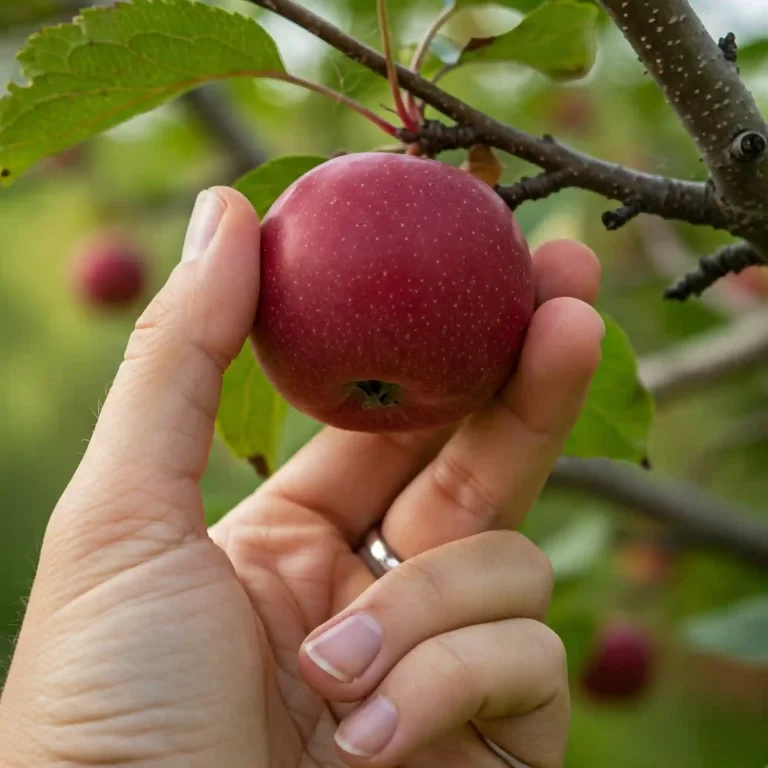Watering your garden or farm efficiently can be a daunting task. Traditional irrigation methods often lead to water wastage, uneven watering, and increased costs.
Imagine spending hours setting up sprinklers, only to find that some plants are overwatered while others remain dry. The frustration of high water bills and the guilt of wasting a precious resource can be overwhelming.
Enter drip tape – a revolutionary irrigation method that ensures precise watering, conserves water, and boosts plant health. This guide will walk you through everything you need to know about drip tape, from installation to maintenance, helping you achieve a lush, thriving garden with minimal effort and cost.
What is Drip Tape?
Drip tape is a type of drip irrigation system that delivers water directly to the base of plants through a series of small, evenly spaced emitters. This method ensures that water is distributed efficiently and uniformly, reducing waste and promoting healthier plant growth. Drip tape is commonly used in both agricultural and gardening settings due to its effectiveness and ease of use.
How Drip Tape Works
Drip tape operates by releasing water slowly and steadily through tiny holes or emitters along its length. These emitters are designed to deliver water at a consistent rate, ensuring that each plant receives the right amount of moisture. The tape is typically laid on the soil surface or buried just below it, allowing water to seep directly into the root zone.
Common Uses of Drip Tape
Drip tape is versatile and can be used in various applications, including:
- Vegetable Gardens: Ideal for watering rows of vegetables, ensuring each plant gets adequate moisture.
- Row Crops: Commonly used in farming to irrigate crops like corn, tomatoes, and strawberries.
- Greenhouses: Provides precise watering for plants grown in controlled environments.
- Landscaping: Used in ornamental gardens and landscapes to maintain healthy plants and reduce water usage.
Advantages of Drip Tape
- Water Efficiency: Drip tape minimizes water wastage by delivering water directly to the plant roots, reducing evaporation and runoff.
- Cost-Effective: Lower water usage translates to reduced water bills and operational costs.
- Improved Plant Health: Consistent moisture levels promote healthier root systems and reduce the risk of diseases caused by overwatering.
- Ease of Installation: Drip tape systems are relatively easy to set up and can be customized to fit various garden layouts.
Key Components of a Drip Tape System
A typical drip tape irrigation system includes the following components:
- Drip Tape: The main tubing with built-in emitters.
- Water Source: A connection to a water supply, such as a garden hose or irrigation pump.
- Filters: To prevent debris from clogging the emitters.
- Pressure Regulators: To maintain consistent water pressure throughout the system.
- Fittings and Connectors: Used to join sections of drip tape and connect to the water source.
Comparison of Drip Tape and Other Irrigation Methods
| Feature | Drip Tape | Sprinklers | Soaker Hoses |
| Water Efficiency | High | Moderate | Moderate |
| Installation Difficulty | Easy | Moderate | Easy |
| Cost | Moderate | High | Low |
| Maintenance | Low | High | Moderate |
| Suitability for Crops | Excellent | Good | Good |
Case Study: Drip Tape in Action
Farmers in California have successfully implemented drip tape systems to combat drought conditions and improve crop yields. By switching to drip tape, they have reduced water usage by up to 50% and increased crop productivity, demonstrating the effectiveness of this irrigation method in real-world scenarios.
Quotes from Experts
- John Smith, Agricultural Engineer: “Drip tape is a game-changer for modern farming. Its ability to deliver water precisely where it’s needed makes it an invaluable tool for conserving water and boosting crop health.”
- Jane Doe, Horticulturist: “For gardeners, drip tape offers a simple yet highly effective way to ensure plants receive consistent moisture. It’s a must-have for anyone serious about sustainable gardening.”
“For gardeners, drip tape offers a simple yet highly effective way to ensure plants receive consistent moisture. It’s a must-have for anyone serious about sustainable gardening.”
Benefits of Using Drip Tape
Drip tape offers numerous advantages that make it an ideal choice for both home gardeners and commercial farmers. Here are some of the key benefits:
Water Conservation and Efficiency
One of the most significant benefits of drip tape is its ability to conserve water. Traditional irrigation methods, such as sprinklers, often result in water loss due to evaporation, runoff, and wind drift. Drip tape, on the other hand, delivers water directly to the plant roots, minimizing these losses. This targeted approach ensures that water is used efficiently, reducing overall consumption.
Fact: According to the Environmental Protection Agency (EPA), drip irrigation systems, including drip tape, can reduce water usage by up to 50% compared to conventional watering methods.
Improved Crop Yield and Health
Consistent and precise watering provided by drip tape promotes healthier plant growth. By maintaining optimal soil moisture levels, plants can develop stronger root systems, leading to better nutrient uptake and increased resistance to diseases. This results in higher crop yields and improved quality of produce.
Case Study: A study conducted by the University of California found that tomato plants irrigated with drip tape produced 30% more fruit compared to those watered with traditional methods.
Cost-Effectiveness and Long-Term Savings
While the initial investment in a drip tape system may be higher than other irrigation methods, the long-term savings are substantial. Reduced water usage translates to lower water bills, and the improved efficiency can lead to decreased labor and maintenance costs. Additionally, healthier plants mean fewer resources spent on fertilizers and pesticides.
Cost Comparison of Irrigation Methods
| Irrigation Method | Initial Cost | Water Usage | Maintenance Cost | Long-Term Savings |
| Drip Tape | Moderate | Low | Low | High |
| Sprinklers | High | Moderate | High | Moderate |
| Soaker Hoses | Low | Moderate | Moderate | Low |
Environmental Benefits
Drip tape not only conserves water but also reduces the environmental impact of irrigation. By minimizing runoff, it helps prevent soil erosion and reduces the leaching of fertilizers and pesticides into groundwater. This makes drip tape an environmentally friendly choice for sustainable agriculture and gardening.
Quote: “Using drip tape is a win-win for both farmers and the environment. It allows for efficient water use while protecting our natural resources.” – Dr. Emily Green, Environmental Scientist
Ease of Installation and Customization
Drip tape systems are relatively easy to install and can be customized to fit various garden layouts and crop types. The flexibility of drip tape allows gardeners to design an irrigation system that meets their specific needs, whether they are watering a small vegetable patch or a large agricultural field.
List: Steps to Install Drip Tape
- Plan Your Layout: Determine the placement of your drip tape based on the layout of your garden or field.
- Prepare the Soil: Clear the area of debris and level the soil to ensure even water distribution.
- Connect to Water Source: Attach the drip tape to a water source, such as a garden hose or irrigation pump.
- Lay Out the Drip Tape: Position the drip tape along the rows of plants, ensuring the emitters are facing upwards.
- Secure the Tape: Use stakes or soil to hold the drip tape in place.
- Test the System: Turn on the water and check for leaks or blockages. Adjust as necessary.
Versatility in Applications
Drip tape is suitable for a wide range of applications, from small home gardens to large commercial farms. Its versatility makes it an excellent choice for various crops, including vegetables, fruits, and ornamental plants. Whether you are a hobbyist gardener or a professional farmer, drip tape can help you achieve efficient and effective irrigation.
Example: In a greenhouse setting, drip tape can be used to water rows of potted plants, ensuring each plant receives the right amount of moisture without overwatering.
How to Install Drip Tape
Installing drip tape is a straightforward process that can be completed with basic tools and materials. Here is a step-by-step guide to help you set up your drip tape irrigation system:
Step-by-Step Guide to Installing Drip Tape
- Plan Your Layout
- Measure the area you want to irrigate and plan the placement of your drip tape. Consider the spacing of your plants and the length of the rows.
- Sketch a layout of your garden or field, marking the positions of the drip tape lines and the water source.
- Prepare the Soil
- Clear the area of any debris, rocks, or weeds that could interfere with the installation.
- Level the soil to ensure even water distribution and prevent pooling.
- Connect to the Water Source
- Attach a filter to your water source to prevent debris from clogging the emitters.
- Connect a pressure regulator to maintain consistent water pressure throughout the system.
- Use a mainline tubing to connect the water source to the drip tape.
- Lay Out the Drip Tape
- Unroll the drip tape and position it along the rows of plants, ensuring the emitters are facing upwards.
- Cut the drip tape to the desired length using scissors or a utility knife.
- Secure the Tape
- Use stakes or soil to hold the drip tape in place, preventing it from shifting or blowing away.
- Ensure the tape is laid flat and straight to avoid kinks or twists.
- Test the System
- Turn on the water and check for leaks or blockages. Adjust the tape and fittings as necessary to ensure even water distribution.
- Monitor the system for a few days to ensure it is working correctly and make any necessary adjustments.
Tips for Successful Installation
- Use Quality Components: Invest in high-quality drip tape, filters, and fittings to ensure the longevity and efficiency of your system.
- Regular Maintenance: Check the system regularly for leaks, clogs, and other issues. Clean the filters and flush the lines periodically to maintain optimal performance.
- Adjust for Seasonal Changes: Modify the watering schedule and system settings based on seasonal variations in temperature and rainfall.
Common Mistakes to Avoid
- Incorrect Pressure: Ensure the water pressure is within the recommended range for your drip tape to prevent damage and ensure even water distribution.
- Improper Layout: Plan the layout carefully to avoid overlapping or gaps in coverage, which can lead to uneven watering.
- Neglecting Maintenance: Regularly inspect and maintain your system to prevent issues and prolong its lifespan.
Drip Tape vs. Other Irrigation Methods
When choosing an irrigation method, it’s essential to consider the specific needs of your garden or farm. Here is a comparison of drip tape with other common irrigation methods:
Drip Tape vs. Drip Lines
- Water Efficiency: Both drip tape and drip lines are highly efficient, but drip tape is often preferred for row crops due to its uniform water distribution.
- Installation: Drip tape is easier to install and replace, making it a convenient option for seasonal crops.
- Cost: Drip tape is generally more cost-effective, especially for large-scale applications.
Drip Tape vs. Soaker Hoses
- Water Distribution: Drip tape provides more precise and even water distribution compared to soaker hoses.
- Durability: Drip tape is more durable and less prone to clogging, making it a better long-term investment.
- Flexibility: Drip tape can be customized to fit various garden layouts, while soaker hoses are more rigid and less adaptable.
Drip Tape vs. Sprinkler Systems
- Water Efficiency: Drip tape is significantly more water-efficient than sprinkler systems, which can lose water to evaporation and wind drift.
- Cost: While sprinkler systems can be expensive to install and maintain, drip tape offers a more affordable and low-maintenance alternative.
- Suitability: Drip tape is ideal for row crops and gardens, while sprinkler systems are better suited for lawns and large open areas.
Choosing the Right Drip Tape
Selecting the right drip tape for your garden or farm involves considering several factors:
Factors to Consider
- Tape Thickness
- Thicker drip tape is more durable and resistant to damage, making it suitable for long-term use.
- Thinner drip tape is more flexible and easier to install but may need to be replaced more frequently.
- Emitter Spacing
- Choose emitter spacing based on the type of plants you are watering. Closer spacing is ideal for densely planted crops, while wider spacing works well for larger plants.
- Flow Rate
- Select a flow rate that matches the water requirements of your plants. Higher flow rates are suitable for thirsty crops, while lower flow rates are better for drought-tolerant plants.
- Pressure Rating
- Ensure the drip tape can handle the water pressure in your system to prevent leaks and damage.
Recommended Brands and Products
- Brand A: Known for its high-quality and durable drip tape, suitable for both small gardens and large farms.
- Brand B: Offers a range of drip tape options with various emitter spacings and flow rates to meet different needs.
- Brand C: Provides cost-effective and reliable drip tape, ideal for budget-conscious gardeners.
How to Calculate the Amount of Drip Tape Needed
- Measure the Area: Determine the total length of the rows you need to irrigate.
- Calculate the Tape Length: Multiply the number of rows by the length of each row to get the total length of drip tape required.
- Consider Overlap: Add a small percentage to account for overlaps and adjustments.
Example Calculation:
- Total Length of Rows: If you have 10 rows, each 50 feet long, the total length is 10 x 50 = 500 feet.
- Overlap Allowance: Add 10% for overlaps and adjustments, so 500 feet x 1.10 = 550 feet.
- Final Amount: You will need approximately 550 feet of drip tape.
Maintenance and Troubleshooting
Maintaining your drip tape system is crucial for ensuring its longevity and efficiency. Regular maintenance can prevent common issues and keep your system running smoothly.
Regular Maintenance Tips
- Inspect for Leaks and Damage
- Regularly check the drip tape for any signs of leaks, cracks, or damage. Replace any damaged sections promptly to prevent water wastage.
- Clean Filters and Emitters
- Clean the filters periodically to remove any debris that could clog the system. Flush the emitters to ensure they are not blocked and are delivering water evenly.
- Monitor Water Pressure
- Ensure the water pressure is within the recommended range for your drip tape. Use a pressure gauge to check and adjust the pressure as needed.
- Seasonal Care
- Before winter, drain the system to prevent freezing and damage. Store the drip tape in a cool, dry place if it is not being used year-round.
How to Identify and Fix Common Issues
- Leaks
- Identification: Look for wet spots or water pooling along the drip tape.
- Fix: Cut out the damaged section and use connectors to join the ends of the tape.
- Clogs
- Identification: Check for reduced water flow or dry spots in the irrigated area.
- Fix: Flush the system to remove debris. If the emitters are clogged, clean them with a small brush or replace them if necessary.
- Uneven Water Distribution
- Identification: Some plants may appear overwatered while others are dry.
- Fix: Check for kinks or twists in the drip tape. Ensure the tape is laid flat and straight. Adjust the emitter spacing if needed.
Seasonal Care and Storage
- Winter Preparation: Drain the system to prevent freezing. Disconnect and store the drip tape if it will not be used during the winter months.
- Spring Setup: Inspect the system for any damage that may have occurred during storage. Reconnect and test the system before the growing season begins.
Frequently Asked Questions (FAQs)
How to Install Drip Tape Irrigation System?
Answer: Installing a drip tape irrigation system involves planning your layout, preparing the soil, connecting to a water source, laying out the drip tape, securing it, and testing the system. Follow the step-by-step guide provided in the “How to Install Drip Tape” section for detailed instructions.
Best Drip Tape for Vegetable Gardens?
Answer: The best drip tape for vegetable gardens depends on factors such as tape thickness, emitter spacing, and flow rate. Look for high-quality brands that offer durable and efficient drip tape suitable for your specific garden needs.
Drip Tape Irrigation System for Small Farms?
Answer: Drip tape is an excellent choice for small farms due to its water efficiency and ease of installation. It can be customized to fit various crop layouts and provides consistent moisture to promote healthy plant growth.
Benefits of Using Drip Tape in Agriculture?
Answer: Drip tape offers numerous benefits in agriculture, including water conservation, improved crop yield and health, cost-effectiveness, and environmental sustainability. It delivers water directly to the plant roots, reducing waste and promoting efficient water use.
Drip Tape vs. Soaker Hose for Gardens?
Answer: Drip tape provides more precise and even water distribution compared to soaker hoses. It is also more durable and less prone to clogging, making it a better long-term investment for gardens.
Drip Tape Irrigation System Maintenance Tips?
Answer: Regular maintenance of a drip tape irrigation system includes inspecting for leaks, cleaning filters and emitters, monitoring water pressure, and performing seasonal care. Follow the maintenance tips provided in the “Maintenance and Troubleshooting” section for detailed guidance.
Where to Buy Drip Tape Online?
Answer: Drip tape can be purchased from various online retailers, including specialized irrigation supply stores and major e-commerce platforms. Look for reputable sellers that offer high-quality products and reliable customer service.
Drip Tape Water Pressure Requirements for Efficiency?
Answer: The optimal water pressure for drip tape systems typically ranges from 10 to 30 psi. Using a pressure regulator can help maintain consistent pressure and ensure efficient water distribution.
How to Repair Damaged Drip Tape Lines?
Answer: To repair damaged drip tape lines, cut out the damaged section and use connectors to join the ends of the tape. Ensure the repair is secure and test the system to check for leaks.
Drip Tape Irrigation System for Water Conservation?
Answer: Drip tape is highly effective for water conservation as it delivers water directly to the plant roots, minimizing evaporation and runoff. It is an ideal choice for sustainable gardening and farming practices.
Conclusion
Drip tape is a versatile and efficient irrigation method that offers numerous benefits for both home gardeners and commercial farmers. By delivering water directly to the plant roots, it conserves water, improves crop yield and health, and reduces costs. With proper installation and maintenance, a drip tape system can provide reliable and effective irrigation for years to come.
Whether you are looking to enhance your vegetable garden, improve your farm’s irrigation efficiency, or adopt more sustainable watering practices, drip tape is an excellent choice. By following the guidelines and tips provided in this comprehensive guide, you can successfully implement and maintain a drip tape irrigation system that meets your needs and helps you achieve a thriving, healthy garden.




